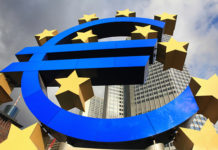Markets
Investors adopted a glass-half-full approach at the start of the new week, extending an intraday recovery that lifted Wall Street out of the red on Friday. Optimism today was further fueled by Bloomberg reporting over the weekend that US authorities are considering to extend the liquidity-offering programme in such a way that it gives the current US bank in focus, First Republic, more time to restore its balance sheet. Equities in Europe bounced 1%, recouping about half of the losses incurred on Friday. US stocks open with 0.2-0.8% gains. Core bond yields shoot higher and money markets in areas including the US, UK and eurozone, pare back their premature cutting bets. ECB’s Nagel in this respect was pretty clear: the central bank must be resolute in fighting inflation: “[…] we’ll continue to move forward resolutely on the path of monetary normalization until inflation is contained and price stability is restored.” Aside from more rate hikes, he calls for an acceleration in QT from the summer. Nagel added that Europe’s banking and financial system is resilient but the ECB has suitable instruments (other than rates) to offer support if needed. German yields jump between 12.9 (30y) and 17.0 bps (2y). The 2% support in the country’s 10y yield thus survives another test that begun end last week. US yields surge in a similar curve shift (7.2 to 19.2 bps) with the 2y yield testing the symbolic 4% mark. Economic data was scant but in any case did not thwart the upleg. The German Ifo indicator rose from 91.1 to 93.3, defying expectations for a stabilization at 91. It is the highest reading since February 2022, before the Russian invasion. Both the current assessment (from 93.9 to 95.4) and the expectations component (from 88.4 to 91.2) improved.
The Japanese yen suffers the most on currency markets. Risk-on and the core bond yield rally lifts USD/JPY from 130.56 to 131.68. EUR/JPY rebounds from 140.57 to 141.85. The euro and the dollar are worthy to each other. EUR/USD ekes out a small gain to 1.078. The trade-weighted DXY index is holding steady above 103. Last week’s risk-off failed to support the traditional safe haven that the USD normally is. That’s because concerns about financial stability originated specifically from the US. Consequently, when fears ebb like today, the dollar’s appeal isn’t dented as much as would be the case otherwise. Sterling isn’t giving up the fight for EUR/GBP 0.88. The pair however did leave the intraday lows at around 0.878 behind as the first US investors started joining.
News & Views
According to GKI Economic Research, economic sentiment in Hungary rose markedly in March to -13.8 from -18.2 as both consumer expectations (-43.8 from -51.9) and business confidence (-3.2 from -6.4) improved. In the business sector, expectations of industrial and service companies improved significantly, while expectations in construction and trade deteriorated noticeably, but to a lesser extent. According to GKI, companies’ efforts to raise prices declined substantially, while their willingness to hire rose. Consumers are no more worried than they were in 2020, during the panic of the Covid outbreak. However, pessimism is still very strong. The assessment of the state of the Hungarian economy was more positive than in February, both among households and businesses. In other news from the country, government party Fidesz nominated Eva Buza and Zoltan Kovacs for the monetary council of the National bank of Hungary. Buza said that price stability is the MNB’s primary goal. Inflation needs to be curbed to single digits by the end of the year. She also advocated fiscal and monetary policy coordination is needed. Recently, MNB governor Matolcsy and Prime Minster Orban openly disagreed on the trajectory for monetary policy. The forint trades even trades marginally weaker today (EUR/HUF 385.75 area) even as risk sentiment improved.
According to data published by the Confederation of British Industry, reported sales in retailing in March were broadly stable (1 from 2). However, sales for the time of the year improved from 6 to 12 and orders placed at suppliers also improved from -25 to -2. Retailers even turned further positive on future sales. The expected volume of sales (retailing) for April rose to 9 from -18, the first positive figure after 6 months of negative readings. Last week, the Bank of England in the communique after its policy meeting already indicated that GBP growth in the country is now expected to increase slightly in Q2 while a decline of 0.4% was expected in February. Q1 activity was still seen contracting marginally (0.1%).













